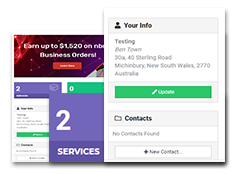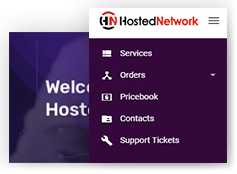Customer experience (also known as CX) is the experience and interactions that your customer has with your MSP throughout their entire customer journey, from the first contact to becoming a happy and loyal customer.
Customer experience is an essential part of Customer Relationship Management for all businesses but particularly for MSPs given the ongoing business nature of our industry. Ultimately this is because a customer who has a positive experience with your business is much more likely to become a repeat and loyal customer making it easier to upsell other services to but also grow the relationship in general. Let’s face it – people tend to buy from businesses that they like! So it goes without saying that if you want your customers to stay loyal, you must invest in their experience.
Customers’ experiences with your MSP service start when they learn about your business and will continue for their entire customer lifetime.
To help you ensure that you provide a high level of Customer Experience we’ve put together a list of 10 techniques that as an MSP you can use to improve their experience.
1. Identify your customers clearly
Start by analysing your core customers and their characteristics. It might sound simple but consider things like:
- Where are they based?
- What age are they?
- What are their roles within the organisation?
- What do they care about the most (priorities)?
- How do they make decisions?
- What are their hobbies and interests?
- Do they have kids? If so, what ages?
Ideally if you have a CRM you should be making notes of these items so that you can communicate it easier internally.
You can use this information in a number of ways to tailor their personal experience. As an example if you do christmas gifts for your key clients you know what they like to drink (or not drink) then you can tailor their Christmas experience rather than sending the typical generic Christmas hamper.
2. Get personal
Everyone likes to feel connected with – it’s human nature. This means that you should tailor your marketing and sales directly to who you’re speaking with. As an example – avoid generic marketing messages where possible and instead send personalised emails. Here’s the secret – they can still be templated but if they look personal you’ll get a much better response rate.
3. Be feedback driven
Everyone likes to be heard and as they say communication is key to any relationship. So do plenty of listening! Encourage your customers to provide feedback but most importantly drive change internally based on this feedback.
As you improve and make changes make sure you communicate back to your customers on the changes you’ve made and what they can expect from you in future. This feedback could be communicated in your account management meetings or even via a newsletter.
4. Keep communicating
There is nothing worse than hearing “I don’t know why we pay you, we never see or hear from you apart from your invoice”. While technically this might be because everything is working well and your MSP is doing its job, the customer can feel forgotten and in turn forgets your value. Ensure that you’re reaching out to your customers regularly, even if it’s a simple email or call to touch base.
Tip: Schedule regular account management meetings so that you’re regularly in front of your clients.
5. Say “Thank you”
Sounds simple but this is a very powerful tool and goes a long way. Send out a handwritten note saying thank you to prospects, people that referred you, or even those that had a bad experience with something (e.g. thank you for your patience).
Another example could be when they buy something, whether it’s their first order or their 1000th order, customer’s love to hear that you appreciate their business.
6. Be Proactive
It’s easy to get caught up in reacting to issues as they come up, but the successful MSPs are the ones that can work through that to provide proactive recommendations and minimise or remove issues before they occur.
While it’s cliche, remember to your client you are their trusted advisor.
7. Encourage customers to share positive experiences
Your customers automatically become ambassadors for your MSP service, therefore they need to be constantly encouraged to share their positive experiences about your service, this could be with their internal team (e.g. “John’s from the Contoso IT team did a great job on XYZ”)
Unfortunately people tend to focus on the negatives which results in the positive experiences being overlooked. Encouraging your clients to talk and share their positive experiences helps to control the narrative – both internally at existing clients but also externally for prospective clients.
8. Be smarter and automate
As your MSP grows so will the complexity behind the day to day operations, while growth is good it often can result in the little things being sacrificed and it’s these little things that can often impact Customer Experience.
So in a world that is often competing for you and your team’s time, how do you balance everything? One simple way is to leverage automation tools such as Zapier, Hubspot and AutoPilot. Using these sorts of tools allows you to build automation workflows for you and your team.
As an example let’s say you wanted to send a personalised happy anniversary email to each of your key clients well you could build an automation workflow in one of these tools that will either create a task for you or your team to send the email, or take it a step further and automatically send a personalised email.
Another idea is to automatically create tasks for your sales team if there has been no engagement with one of your accounts in a certain amount of time.
With automation – the limit is only your creativity and it will help ease the repetitive tasks and ensure the little things aren’t forgotten.
9. Invest in your staff
Your staff are one of the most important tools you have when it comes to Customer Experience however the bigger you grow the less control you have. Therefore it’s important to ensure you invest in your staff’s customer service training regularly by providing them with mentorship and guidance.
Unfortunately many interactions with your MSP’s customers will be via your support team which they’ll typically be speaking to because of an IT issue. This means that you’re already at a disadvantage when it comes to Customer Experience which further highlights the importance of training staff.
Some ideas to encourage staff to provide better Customer Experience include:
- Building it into a KPI
- Using CSTAT to help identify customer service issues quickly
- Leveraging training tools like Trainual or Canity
10. Bend the rules
To quote the Matrix – “There is no spoon”
The larger organisations become the more rigid they seem to become but unfortunately this works directly against providing a good Customer Experience as what was once a simple request now needs to follow a strict process.
While this is up to the individual MSP, at Hosted Network we believe in putting our customers first and we recommend you doing the same. Instead of trusting our staff to follow the process, we trust them to know when to break the process.
To wrap up I’ll quote Patty McCord – the Chief Talent Officer at Netflix
“Over the years we learned that if we asked people to rely on logic and common sense instead of formal policies, most of the time we would get better results and at a lower cost. “

 Contact us
Contact us  Partner Login
Partner Login  Service Status
Service Status 


 May 19, 2021
May 19, 2021
 Ben Town
Ben Town
 5 mins
5 mins